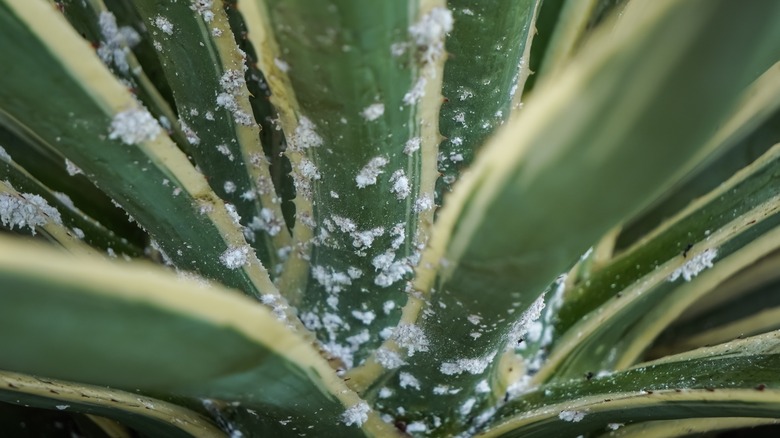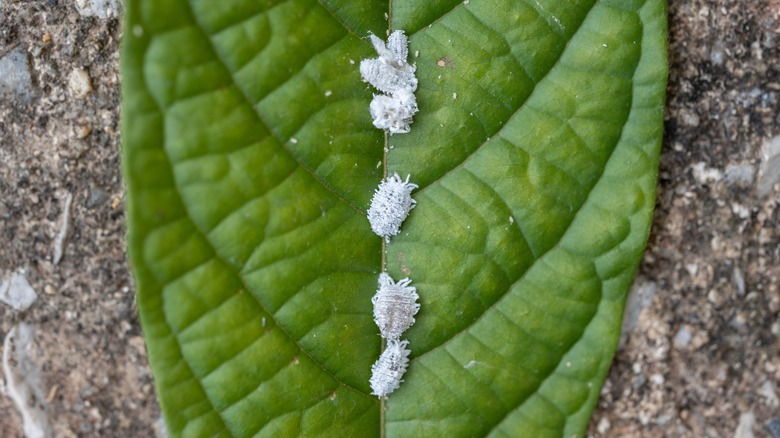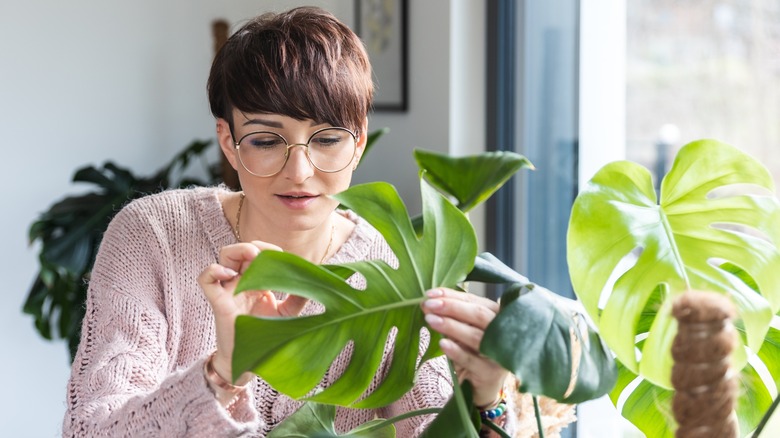Why Do People Use Hydrogen Peroxide To Treat Mealybugs & Does It Actually Work?
A mealybug infestation on your houseplants can cause stress levels to rise out of control because these annoying and damaging pests can be difficult to control. There have even been cases where gardeners have just thrown away the plant because they failed to manage this pest. In desperation, some gardeners have turned to using hydrogen peroxide, hoping that drenching the soil with a diluted solution of hydrogen peroxide and water will kill the mealybug eggs and halt the infestation in its tracks. Hydrogen peroxide, which is relatively inexpensive to buy, has been hailed as the wonder cure for all sorts of plant problems in recent years, and that's why houseplant enthusiasts have been turning to it in the hope of treating their mealybug infestations.
But while hydrogen peroxide pest control hacks can be effective in controlling certain fungal and bacterial diseases in plants and around the home, there's no evidence to suggest that this is effective in controlling mealybugs. The hydrogen peroxide you can buy in the store is pre-diluted, with only 3% of hydrogen peroxide in water. You will then need to dilute it even further (three parts water to one part hydrogen peroxide) before you can safely use it on your plants. Here's why this control method doesn't work and what you can do instead.
Understanding mealybugs and why hydrogen peroxide doesn't kill them
Mealybugs are small sap-sucking insects that are relatively easy to spot on your plants thanks to their white waxy coating. From a distance, they can look like tiny specks of cotton wool on your plants. Mealybugs are just one of a few common pests that will wreak havoc on your houseplants. When inspected more closely, these tiny insects have their entire bodies covered with a mealy substance, a natural defense mechanism designed to protect the insects from droplets of water and many contact-type insecticides. So, in order for any effective treatment to be able to kill these annoying insects, it has to have the capacity to break through the waxy barrier covering their bodies.
When hydrogen peroxide is mixed with water, it won't be able to break through the waxy coating on these insects to kill them effectively. Even drenching the soil with a hydrogen peroxide solution in the hope of killing the eggs won't work. This is because the tiny eggs are also covered with a white waxy coating known as an ovisac, which is waterproof. So, it's necessary to find a more effective method of controlling these pests and keeping your houseplants healthy.
How to effectively treat mealybugs on your houseplants
The first thing you want to do when you notice one of your plants infected with mealybugs is to quarantine the plant immediately. In other words, you want to move it away from your other non-infected plants so the pests can't spread to them. If the mealybug problem is not too bad and your plant is small enough, you can simply take it outside and hose off as many of the bugs as you can find. Take careful note of all the crevices where the plant stems and leaves are attached.
The next step is to take a cotton swab and dip it in isopropyl alcohol. This common household item will solve your mealybug problems. Dab the swab onto as many mealybugs as you can find. The alcohol will break through the waxy coating and kill the pests. You'll need to be vigilant for several weeks to remove any newly hatched mealybugs as they appear.
For more severe infestations, you might want to get a systemic insecticide. These types of products are taken up by the roots of the plant, making the plant toxic for the pests to feed on. You can get special pesticide spikes that you insert into the soil, which can be highly effective. Using a combination of systemic insecticide and a cotton swab dipped in alcohol seems to be the most effective way to control mealybugs on your houseplants.


